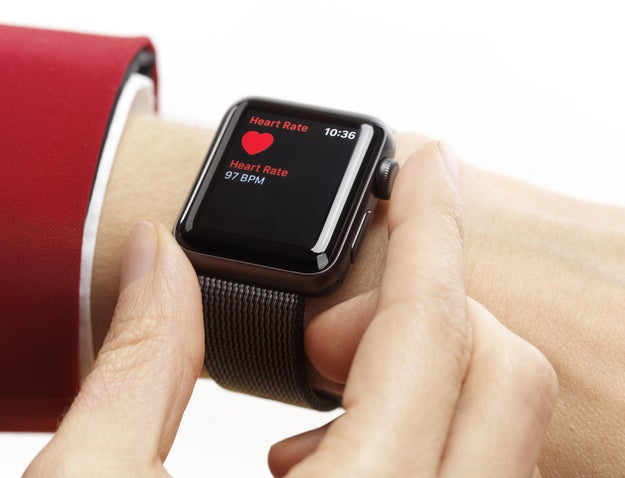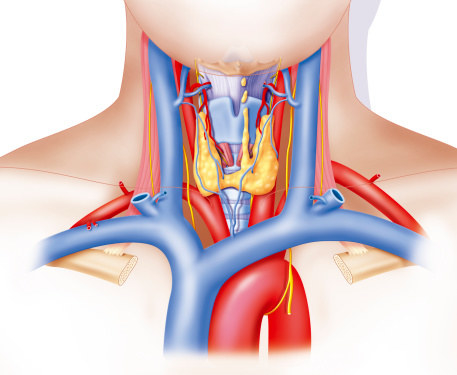 |
| Advertisement |
Heather Hendershot had no symptoms and felt fine — but her Apple Watch indicated that she might have a health problem.
A 25-year-old from Scranton, Kansas, discovered she had a severe thyroid issue after her Apple Watch detected an unusually rapid heartbeat.

Oleksiy Maksymenko / Getty Images / Via gettyimages.com
Heather Hendershot was relaxing at home and watching television with her husband last Saturday night when her new Apple Watch began to beep. The device had detected that she had a resting heart rate of 120 beats per minute, which is abnormally high for a young adult resting on the couch. The "normal" resting heart rate range for adults is 60 to 100 beats per minute.
After the first alarm, the watch began beeping every 10 minutes with the rapid heartbeat warning. But Hendershot felt fine. Thinking the watch was wrong, she and her husband decided to check her heart rate manually, and they found the watch was correct. That night, Hendershot's heart rate remained abnormally high and at one point reached 160 beats per minute.
The following afternoon, she decided to visit an urgent care clinic. "I thought I might be sick and my body was just fighting infection, but my husband is a worrywart,” Hendershot told the the Topeka Capital-Journal, which first reported the story. (She did not respond to BuzzFeed News.)
At the clinic, doctors confirmed her heart rate was too high, but could not initially figure out the cause. So Hendershot went to the hospital.
At the ER, blood tests revealed that she had severe hyperthyroidism.

Garo / Getty Images / Via gettyimages.com
The thyroid is a butterfly-shaped gland that sits at the front of your neck. Hyperthyroidism, or an overactive thyroid, is a condition where the gland produces too much thyroid hormone, including thyroxine.
The condition is often associated with symptoms like fatigue, anxiety, sudden weight loss, rapid heartbeat, sweating, tremors, irregular bowel movements, and other problems — but there may be no obvious early symptoms or they can be mistaken for other conditions. The most common cause of hyperthyroidism is an autoimmune disorder called Grave's disease, which is more common in women than men.
Hyperthyroidism can be treated with medications that slow down the production of thyroxine, and in some cases, with radiation or surgery to eliminate or remove part or all of the gland. If left untreated, hyperthyroidism can lead to a "thyroid storm," a severe and potentially life-threatening condition.
"The ER physician who first saw Heather thought she might have thyroid storm; she did not, but she did have moderately severe hyperthyroidism and she needed to be hospitalized," said Dr. Alan Wynne, an endocrinologist at the Cotton O’Neil Diabetes and Endocrinology Center at Stormont Vail Hospital in Topeka, Kansas, who treated Hendershot.
Hendershot was given several medications to slow down or stop the thyroid from producing excess levels of hormones, Wynne told BuzzFeed News.
Hendershot said she did not have any noticeable symptoms of hyperthyroidism. The watch was the only thing that signaled that something was wrong.

Bsip / Getty Images / Via gettyimages.com
People with hyperthyroidism can range from having few or no symptoms to being very sick, Wynne said, so it's not surprising that Hendershot didn't present with any symptoms at the ER. "What's unusual is the way that her rapid heart rate was picked up — by this device — and that she did not feel her heart beating fast," Wynne said. "To have your heart race and not be aware of it is not normal."
You would probably notice if your heart rate was above 120 beats per minute, he said, and it would feel like your heart was pounding in your chest. But in Hendershot's case, she felt nothing. The watch was the only reason she even noticed anything was wrong. "It's interesting that a device told her she was not doing well, and she acted on it," Wynne said.
Most cases of hyperthyroidism get worse over time, so it's likely that Hendershot would've eventually developed more symptoms. But by that time, her condition could have been more serious. "She probably would’ve gone not just days but weeks or months until her thyroid would produce so much hormone day by day that she would start sweating or shaking or having tremors," Wynne said.
While the early symptoms of hyperthyroidism might not be obvious, the blood tests to diagnose the condition are very reliable. "In Heather's case, she said she felt fine but the blood tests revealed that her TSH (thyroid stimulating hormone) was completely off," Wynne said.
"I've been out of training for 25 years and I've never seen anything like this," Wynne said.

LWYang / Flickr CC / Via Flickr: lwy
Apple Watches and other fitness trackers or heart rate monitors worn on the wrist have a heart rate sensor on the underside that measures a person's heartbeat using an optical technology called photoplethysmography, which detects the amount of blood flowing through the veins in your wrist at any given moment to calculate your heart rate in beats per minute.
"It's interesting that a device can pick this up early on with some variable and clue us into earlier diagnosis before someone develops symptoms," Wynne said.
"This is probably the cusp of the edge of a new era of health care and health care monitoring," Wynne said. "I wouldn’t doubt in several years that you and I could wear some watch or patch that is increasingly able to screen and monitor our health status."
Don't panic if your Apple Watch, Fitbit, or any other monitoring device signals a fast heart rate — it does not automatically mean you have hyperthyroidism or another serious problem. "[In this case], the watch was not a lab test, it detected a manifestation of a lab test abnormality," Wynne said.
Many different things can influence your heart rate — age, exercise, medications, stress, body size and position, physical conditioning, and air temperature — so don't freak out anytime it goes above 100 beats per minute, because that can be perfectly normal. But if it's consistently elevated while you are at rest (above 100 beats per minute) or low (below 60 beats per minute), you should ask your doctor about it. A fast resting heart rate, or tachycardia, could be a sign of a more serious condition.
If you don't have a fitness tracker, you can measure your heart rate on your own using a clock or timer. Place two fingers (but not your thumb — it has its own pulse) on your wrist or on the side of your neck, next to your windpipe, and locate your pulse. Count the number of beats that occur in 15 seconds and multiply that number by four to find out the beats per minute, or your heart rate.


0 comments: